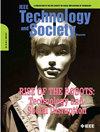A Review of Techniques and Policies on Cybersecurity Using Artificial Intelligence and Reinforcement Learning Algorithms
IF 2.1
4区 工程技术
Q3 ENGINEERING, ELECTRICAL & ELECTRONIC
引用次数: 0
Abstract
Cybersecurity is a critical process that safeguards networks, systems, and applications against cyber-attacks, wherein digital information is targeted for unauthorized access, manipulation, or destruction. As attackers continually evolve their tactics, addressing cybersecurity challenges has become paramount, especially in sensitive domains like the military and defense industries. This article delves into the challenges that artificial intelligence (AI) faces in the military domain, specifically focusing on defense applications. We review AI algorithms relevant to defense, examining their potential applications and benefits: much of this study revolves around cybersecurity in defense applications, particularly within cyber-physical systems (CPS). We explore reinforcement learning (RL) and deep RL (DRL) algorithms in CPS, aiming to enhance understanding of the cybersecurity implications in this domain. In this context, we present RL and DRL algorithms employed in cyber-attacks and their potential threats and vulnerabilities. Furthermore, we discuss how RL and DRL algorithms can be effectively leveraged for cyber-attack detection and defense applications, providing usable insights into bolstering CPS cybersecurity. By addressing both technical aspects and ethical considerations, this article offers a comprehensive view of the challenges and opportunities surrounding cybersecurity in defense applications.基于人工智能和强化学习算法的网络安全技术和策略综述
网络安全是保护网络、系统和应用程序免受网络攻击的关键过程,其中数字信息是未经授权访问、操纵或破坏的目标。随着攻击者战术的不断发展,应对网络安全挑战变得至关重要,尤其是在军事和国防工业等敏感领域。本文深入探讨了人工智能在军事领域面临的挑战,特别是国防应用。我们回顾了与国防相关的人工智能算法,考察了它们的潜在应用和好处:这项研究的大部分内容都围绕着国防应用中的网络安全展开,特别是在网络物理系统(CPS)中。我们探索了CPS中的强化学习(RL)和深度RL(DRL)算法,旨在增强对该领域网络安全影响的理解。在此背景下,我们介绍了网络攻击中使用的RL和DRL算法及其潜在威胁和漏洞。此外,我们还讨论了如何有效利用RL和DRL算法进行网络攻击检测和防御应用,为加强CPS网络安全提供有用的见解。通过解决技术方面和道德方面的考虑,本文全面了解了国防应用中围绕网络安全的挑战和机遇。
本文章由计算机程序翻译,如有差异,请以英文原文为准。
求助全文
约1分钟内获得全文
求助全文
来源期刊

IEEE Technology and Society Magazine
工程技术-工程:电子与电气
CiteScore
3.00
自引率
13.60%
发文量
72
审稿时长
>12 weeks
期刊介绍:
IEEE Technology and Society Magazine invites feature articles (refereed), special articles, and commentaries on topics within the scope of the IEEE Society on Social Implications of Technology, in the broad areas of social implications of electrotechnology, history of electrotechnology, and engineering ethics.
 求助内容:
求助内容: 应助结果提醒方式:
应助结果提醒方式:


